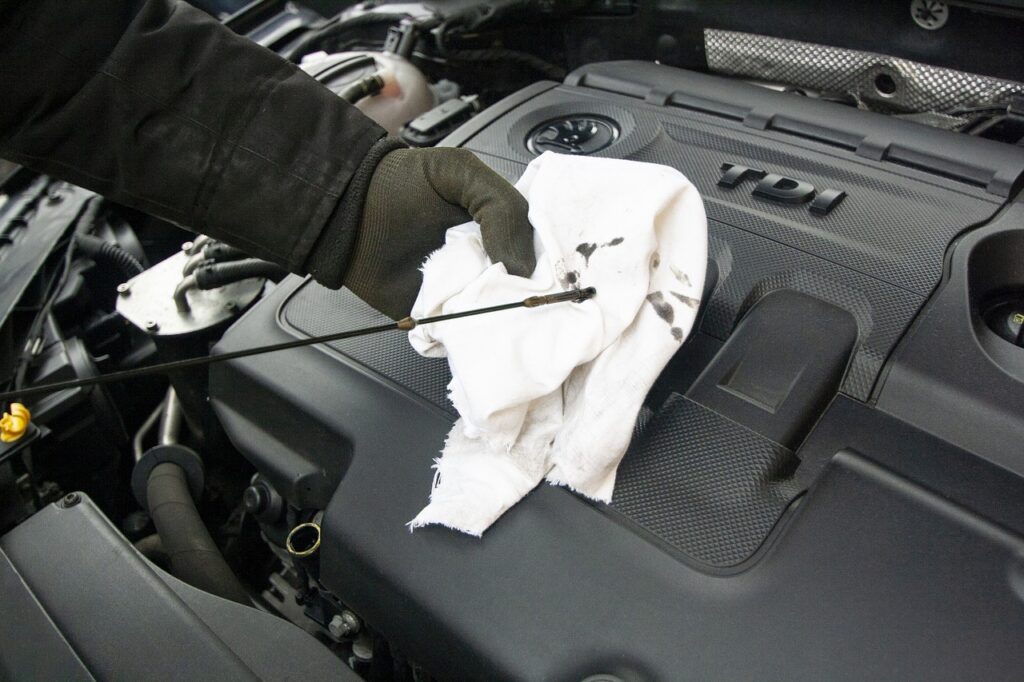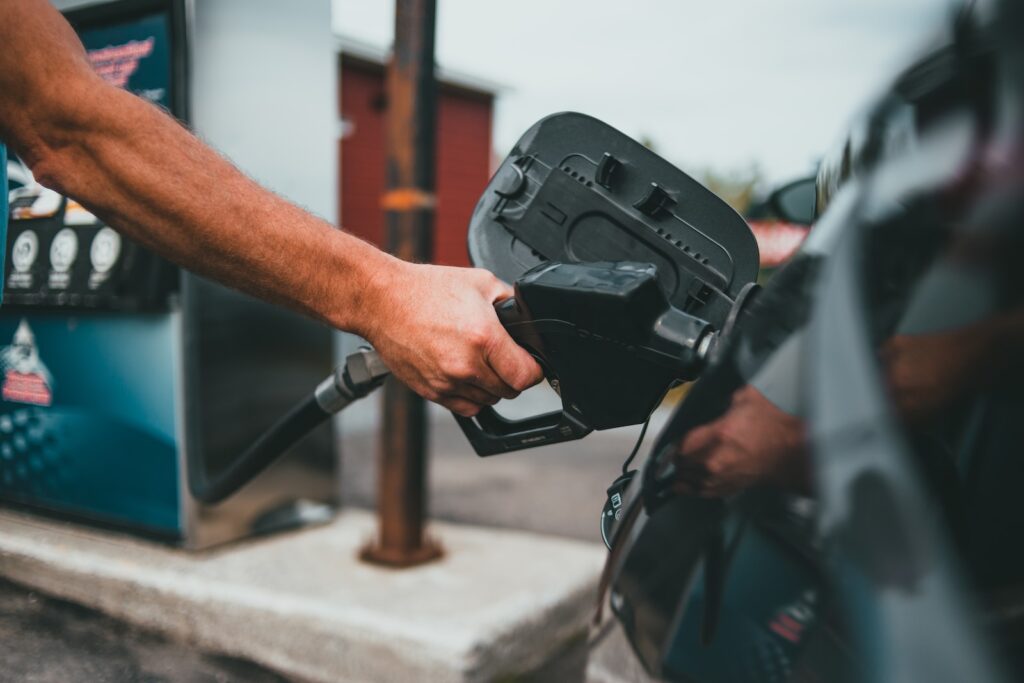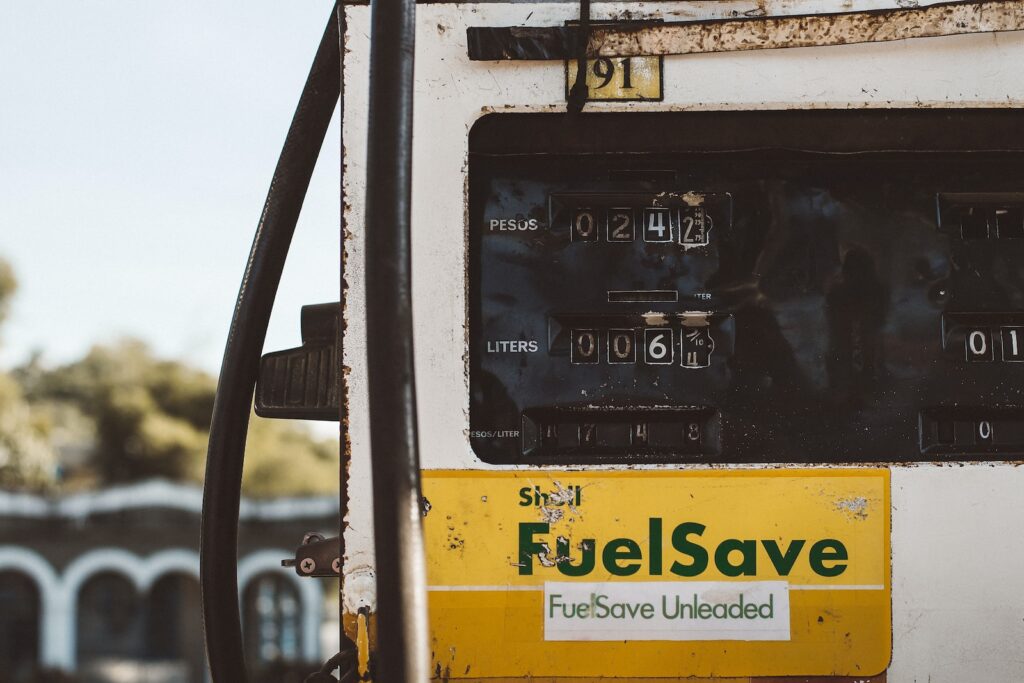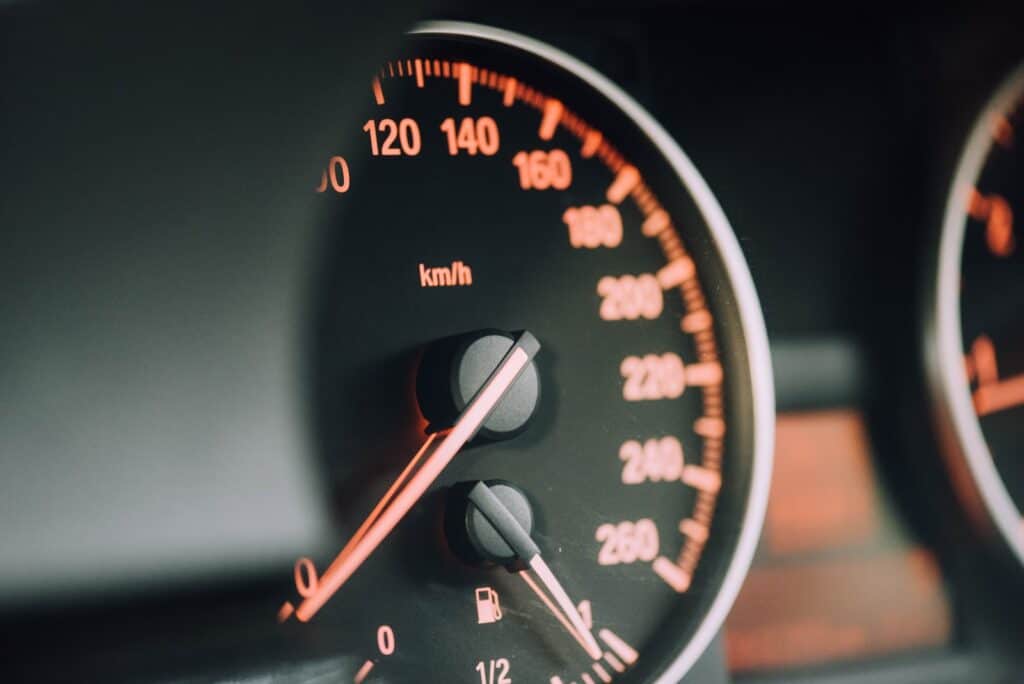Gone are the times when fuel cost just a few pennies and wasn’t a major concern for the everyday driver. Remember when fuel was merely an afterthought in our budgets? Since the COVID pandemic and the Ukraine War, inflation has been on the rise, making saving fuel an increasingly common challenge for many drivers.
However, not everyone knows the best ways to save money at the pump. In this article, we will provide some simple tips and tricks on how to save fuel and reduce your carbon footprint.
Table of Contents
Understanding Fuel Efficiency
Fuel efficiency is a measure of how much fuel a vehicle consumes per mile driven. The most common metric used to measure fuel efficiency is miles per gallon (MPG). A higher MPG means that the vehicle consumes less fuel to travel a certain distance and is, therefore, more fuel-efficient.
Fuel efficiency is affected by several factors, including the vehicle’s engine, fuel economy, and fuel consumption.
The engine’s design, size, and weight have a significant impact on fuel efficiency. Engines that are designed to be more fuel-efficient are more likely to have better fuel economy and consume less fuel.
Fuel economy is the measure of how efficiently a vehicle uses fuel. The Environmental Protection Agency (EPA) provides fuel economy ratings for new vehicles, which can help consumers compare the fuel efficiency of different models. The EPA ratings are based on standardized tests that simulate real-world driving conditions.
Fuel consumption is the amount of fuel a vehicle uses per unit of distance traveled. Fuel consumption is affected by several factors, including driving habits, vehicle maintenance, and road conditions. Aggressive driving, such as hard acceleration and braking, can significantly reduce fuel efficiency. Proper vehicle maintenance, such as regular oil changes and tire inflation, can help improve fuel efficiency.
Importance of Vehicle Maintenance
Maintaining a vehicle is essential to ensure its longevity and efficiency. Regular maintenance can also help save fuel, which in turn saves money. Neglecting vehicle maintenance can lead to decreased fuel economy, increased emissions, and costly repairs.
One of the most important aspects of vehicle maintenance is keeping the engine in good condition. Regular oil changes, for example, can help keep the engine lubricated and running smoothly. Dirty oil can cause the engine to work harder, which can lead to decreased fuel economy.

Tire maintenance is another important aspect of vehicle maintenance. Proper tire pressure can help improve fuel economy by reducing rolling resistance. Underinflated tires can cause the engine to work harder, which can lead to decreased fuel economy. Checking tire pressure regularly and maintaining the recommended PSI can help save fuel and extend the life of the tires.
Brake maintenance is also important for fuel efficiency. Worn brake pads can cause the brakes to drag, which can increase fuel consumption. Regular brake inspections and replacing worn brake pads can help save fuel and prevent costly repairs.
Other components that can affect fuel efficiency include the air filter, oxygen sensor, and spark plugs. A dirty air filter can restrict airflow to the engine, which can cause it to work harder and decrease fuel economy. A faulty oxygen sensor can cause the engine to run rich, which can increase fuel consumption. Worn or dirty spark plugs can cause misfires, which can also decrease fuel economy.
Overall, regular vehicle maintenance is crucial for maintaining fuel efficiency and preventing costly repairs. By keeping the engine, tires, brakes, and other components in good condition, drivers can save fuel and money in the long run.
Driving Techniques for Saving Fuel

Driving techniques play a crucial role in fuel consumption. By adopting eco-driving habits, drivers can reduce fuel consumption, save money, and help the environment. Here are some driving techniques that can help save fuel:
Acceleration and Braking
Aggressive acceleration and braking are fuel-wasting habits. European tests indicate that aggressive driving habits, such as regular swift acceleration and heavy braking, can increase fuel consumption by around 40%. Drivers can save fuel by accelerating gradually and smoothly, avoiding sudden stops, and coasting to a stop whenever possible. Coasting to a stop, instead of braking hard, allows the vehicle to use the kinetic energy to move forward and saves fuel.
Speed and Cruise Control
Driving at high speeds increases fuel consumption. Maintaining a steady speed and using cruise control on the highway can help save fuel. However, using cruise control only aids fuel economy while driving on a flat surface. It is important to note that driving above the speed limit not only wastes fuel but is also dangerous.
Idling and Aerodynamics
Idling wastes fuel. Turning off the engine while waiting in traffic or at a drive-thru can save fuel. Additionally, reducing drag by closing windows and removing roof racks can improve aerodynamics and save fuel.
Driving Style and Hypermiling
Driving style also affects fuel consumption. By avoiding rapid acceleration and hard braking, drivers can save fuel. Hypermiling, a driving technique that involves maximizing fuel efficiency, can further improve fuel economy. Some hypermiling techniques include driving at a steady speed, anticipating traffic, and avoiding unnecessary idling.
Impact of Vehicle Weight on Fuel Consumption
The weight of a vehicle has a significant impact on its fuel consumption. According to a study by MIT, every 10% reduction in vehicle weight can cut fuel consumption by about 7%. Therefore, reducing the weight of a vehicle is a known strategy to address gas emissions and fuel use by passenger vehicles.
Reducing the weight of a vehicle can be achieved through various means, such as using lighter materials, reducing the size of the vehicle, and removing unnecessary equipment. For example, removing golf clubs from the trunk or roof-mounted cargo boxes can reduce the weight of the vehicle and improve fuel economy.
It is also important to note that carrying heavy items in the trunk or rear-mounted cargo boxes can increase fuel consumption. Therefore, it is recommended to only carry the necessary items and avoid overloading the vehicle.
In addition to reducing weight, maintaining proper tire pressure can also improve fuel economy. Underinflated tires can increase fuel consumption by up to 3%. Therefore, it is recommended to check tire pressure regularly and inflate them to the recommended level.
Aerodynamics and Fuel Efficiency
Aerodynamics plays a crucial role in the fuel efficiency of a vehicle. Drag, also known as aerodynamic drag or air resistance, is the force that opposes the motion of a vehicle through the air. The higher the drag, the more fuel is needed to overcome it, resulting in lower fuel efficiency.
One of the most significant contributors to drag is the shape of the vehicle. A streamlined shape with smooth curves and minimal protrusions reduces drag, while a boxy shape with sharp edges and a roof rack increases drag. Therefore, removing roof racks when not in use can improve fuel efficiency by reducing the vehicle’s aerodynamic drag.
Another factor that affects drag is wind resistance. Driving at high speeds increases wind resistance, which in turn increases drag and reduces fuel efficiency. Reducing speed can help improve fuel efficiency by reducing wind resistance and drag.
Aerodynamic retrofitting techniques, such as adding aerodynamic aids to the vehicle, can also help reduce drag and improve fuel efficiency. Realistic on-road operations can be numerically simulated to assess the effectiveness of these techniques.
Fuel Saving Tips

There are many ways to save fuel and reduce gas expenses. By adopting fuel-saving techniques, drivers can save money, reduce fuel consumption, and help the environment. Here are some tips for saving fuel:
Slow Down
Speeding is one of the most significant factors that increase fuel consumption. Driving at high speeds consumes more fuel than driving at moderate speeds. By reducing speed, drivers can save fuel and money. According to the US Department of Energy, for every 5 mph over 50 mph, drivers pay an additional $0.25 per gallon of gasoline.
Maintain Your Vehicle
Maintaining your vehicle can help you save fuel. Regular oil changes, tire rotations, and air filter replacements can improve your car’s fuel efficiency. A properly maintained vehicle can consume up to 25% less fuel than a poorly maintained one.
Avoid Idling
Idling your vehicle wastes fuel and money. If you are waiting for someone or something, turn off your engine. Restarting your car uses less fuel than idling for more than 30 seconds.
Use Cruise Control
Using cruise control can help you save fuel on the highway. Cruise control maintains a constant speed, which can help you avoid unnecessary acceleration and deceleration, thus saving fuel.
Plan Your Trips
Planning your trips can help you save fuel and money. Combining errands into one trip can reduce the number of times you need to start your car, thus saving fuel. Additionally, using a GPS navigation system can help you avoid traffic and find the shortest route to your destination.
Drive Smoothly
Driving smoothly can help you save fuel. Avoid sudden acceleration and braking, as they waste fuel. Instead, accelerate gradually and brake smoothly.
By following these fuel-saving tips, drivers can save money, reduce fuel consumption, and help the environment.
Understanding Fuel Types

To understand how to save fuel, it is important to understand the different types of fuel available. The most common types of fuel are gas and diesel, but there are also premium and premium fuel options available.
Gasoline (Gas): Gasoline is a type of fuel that is commonly used in cars and other vehicles. It is a mixture of hydrocarbons and is typically derived from crude oil. Gasoline is graded by its octane rating, which is a measure of its resistance to detonation. The higher the octane rating, the more resistant the fuel is to detonation, which can help improve engine performance.
Diesel: Diesel is a type of fuel that is commonly used in trucks and other heavy-duty vehicles. It is derived from crude oil and is made up of long-chain hydrocarbons. Diesel engines are typically more efficient than gasoline engines and can provide better fuel economy.
Premium Fuel: Premium fuel is a type of gasoline that has a higher octane rating than regular gasoline. It is designed for use in high-performance engines that require a higher octane rating to prevent detonation and improve performance. Premium fuel is more expensive than regular gasoline, but it can provide better fuel economy and performance in certain vehicles.
Premium Diesel: Premium diesel is a type of diesel fuel that contains additives designed to improve engine performance and fuel economy. It is typically more expensive than regular diesel fuel but can provide better fuel economy and performance in certain vehicles.
Understanding the different types of fuel available can help drivers make informed decisions about what type of fuel to use in their vehicles. By selecting the right type of fuel for their vehicle, drivers can improve fuel economy and save money on gas over time.
Effects of Temperature on Fuel Efficiency
Temperature can have a significant impact on fuel efficiency. In general, colder temperatures tend to decrease fuel efficiency, while warmer temperatures can increase it. This is because colder temperatures can cause the engine to work harder to maintain optimal operating temperature, resulting in increased fuel consumption.
One factor that can contribute to decreased fuel efficiency in colder temperatures is the use of the air conditioner. When the air conditioner is turned on, it can put additional strain on the engine, causing it to work harder and consume more fuel. As a result, it is recommended to minimize the use of the air conditioner when possible, especially in colder temperatures.
On the other hand, in warmer temperatures, the use of the air conditioner can have less of an impact on fuel efficiency. This is because the engine is already working harder to maintain optimal operating temperatures, so the additional strain from the air conditioner may not be as significant. However, it is still recommended to use the air conditioner sparingly to maximize fuel efficiency.
Another factor to consider is the type of fuel being used. In colder temperatures, it may be beneficial to use a fuel with a higher octane rating, as this can help improve engine performance and fuel efficiency. However, it is important to note that using a higher octane fuel may not always result in improved fuel efficiency, and can sometimes even decrease it.
Economic and Environmental Implications
Saving fuel not only benefits individuals but also has significant economic and environmental implications. The following are some of the key implications of saving fuel:
Economic Implications
Saving fuel can lead to significant cost savings for individuals and businesses. The cost of fuel can be a significant expense for many households and businesses, and reducing fuel consumption can help to reduce this expense. According to the U.S. Department of Energy, the national average cost of gasoline in the United States is $3.78 per gallon, and the average annual cost of fuel for a car is $1,400. By reducing fuel consumption, individuals can save money on gas costs and potentially avoid expensive repairs associated with poor vehicle maintenance.
In addition to saving money, reducing fuel consumption can also have positive economic implications for countries. For example, Russia, one of the world’s largest oil producers, has been hit hard by falling oil prices in recent years. By reducing fuel consumption, individuals and businesses can help to reduce the demand for oil and potentially stabilize oil prices, which can have positive economic implications for oil-producing countries.
Environmental Implications
Reducing fuel consumption can also have significant environmental implications. Burning fossil fuels such as gasoline and diesel produces greenhouse gas emissions, which contribute to climate change. By reducing fuel consumption, individuals and businesses can help to reduce their carbon footprint and contribute to efforts to mitigate climate change.
In addition to reducing greenhouse gas emissions, reducing fuel consumption can also help to reduce other harmful emissions such as nitrogen oxides and particulate matter, which can have negative impacts on air quality and human health. By reducing these emissions, individuals and businesses can help to improve air quality and promote public health.
Overall, saving fuel has important economic and environmental implications. By reducing fuel consumption, individuals and businesses can save money, reduce demand for oil, and contribute to efforts to mitigate climate change and improve air quality.








